
NPS illustration Paleoindian PeriodAt least 11,000 years agoA Clovis point from this period was made from obsidian obtained at Obsidian Cliff. 10,000 years agoSites all over the park yield paleoindian artifacts, particularly concentrated around Yellowstone Lake. Clovis peoples hunted large game and gathered resources across North America. 9,350 years agoA site on the shore of the Yellowstone Lake has been radiocarbon dated to 9,350 years ago. People likely occupied this site for short seasonal periods. 9,000 years ago9,000 years ago until 1,000 common era (CE), people leave traces of camps on the shores of Yellowstone Lake. Note: CE = Common Era (replaces AD) Archaic Period8,000 years agoVegetation similar to what we find today begins to appear. This period is characterized by use of large side-notched projectile points and atlatl technology. 3,000 years agoBison jumps and corrals begin to be used in the Rocky Mountain region. Oral histories of the Salish place their ancestors in the Yellowstone area. 1,500 years agoBow and arrow begins to replace atlatl (throwing spear). Sheep traps begin to be used in the mountains. 500–1700s CE1400Oral histories of the Kiowa place their ancestors in the Yellowstone area from this time through the 1700s. 1450Little Ice Age begins. 1600sNorth American tribes in the southwest begin acquiring horses in the mid- to late 1600s. Ancestors of the Crow may have come into the Yellowstone ecosystem during this time. 1700sLakota Sioux begin exploring the Yellowstone area. Late 1700s–1840s CELate 1700sFur traders travel the rivers into the Yellowstone region. Tribes in the Yellowstone area begin using horses. 1804–1806The Lewis and Clark Expedition passes within 50 miles of Yellowstone. 1807–1808John Colter first known European-American to visit present-day Yellowstone. 1834–1835Trapper Osborne Russell encounters Tukudika ("Sheep Eaters") in Lamar Valley. 1850s–1871 CE1850sLittle Ice Age ends, climate begins to warm. 1860First organized expedition attempts but fails to explore the Yellowstone Plateau. 1862Gold strike northwest of Yellowstone. 1869Folsom–Cook–Peterson Expedition. 1870Washburn–Langford–Doane Expedition; Old Faithful Geyser named. 1871First Hayden expedition. 1872–1900 CE1872March 1, Yellowstone National Park Protection Act establishes the first national park; first "hotel" in park opens at Mammoth. 1877First budget for park; Nez Perce (Nee-me-poo) flee US Army through Yellowstone. 1883Northern Pacific Railroad arrives near Gardiner, MT. 1885First hotel at Old Faithful opens, known as the Shack Hotel. 1886The US Army arrives to manage Yellowstone, creating the temporary Camp Sheridan at Mammoth. 1891First Lake Hotel built. 1894First National Park Protection Act (Lacey Act) makes it illegal to kill wildlife in the park. 1901–1917 CE1903President Theodore Roosevelt dedicates arch at the North Entrance by laying its cornerstone at Gardiner. 1904Old Faithful Inn opens. 1906The Antiquities Act provides for the protection of historic, prehistoric, and scientific features on, and artifacts from, federal lands. 1908Union Pacific train service begins at West Yellowstone. 1915Private automobiles are officially admitted to the park. 1916The National Park Service Organic Act establishes the National Park Service. 1917Private and commercial horsedrawn conveyances banned on park roads. 1918–1939 CE1918National Park Service (NPS) takes over management of Yellowstone and the Army leaves. 1919Horace Albright becomes first NPS superintendent. 1929President Hoover signs first law changing park’s boundary. 1932President Hoover expands the park again (by executive order). 1930sCivilian Conservation Corps (CCC) and other government-funded work crews complete work in Yellowstone. 1934The National Park Service Director’s Order prohibits killing predators. 1935The Historic Sites Act sets a national policy to “preserve for future public use historic sites, buildings, and objects.” 1940–1959 CE1943–1944Much of the park closes for WWII. 1948Yellowstone receives one million visitors. 1949First motorized oversnow vehicles allowed in park. 1955Mission 66 begins in Yellowstone to revitalize lodging, dining, education, and infrastructure. 1959West of Yellowstone, a 7.5 M earthquake strikes, killing campers in the Custer-Gallatin NF and affecting thermal features and infrastructure in the park. 1960–1975 CE1963Leopold Report leads to the last of the bear-feeding dumps closing over the following several years; Robert Reamer-designed Canyon Hotel burns to the ground. 1965Park sees 2,000,000 visitors for first time. 1966The thermophile Thermus aquaticus is discovered in a Yellowstone hot spring. 1970New bear management plan begins, which includes closing open-pit dumps in park. 1971Overnight winter lodging opens in park and continues yearly. 1975Grizzly bear listed as threatened species in the lower 48 states. 1976–2000 CE1988Public Law 100-443 protects hydrothermal features in national parks from geothermal development on adjacent federal lands; wildfire burns approximately 36% of the park. 1991Clean Air Act Amendments require air-quality monitoring at sites including Yellowstone, a Class I airshed. 1992Park sees 3,000,000 visitors for the first time. 1994Congress enacts a law allowing a percentage of park entrance fees to be kept in the parks. 1995Wolves are restored to the park. 1996New World Mine, near park’s northern boundary, halted. 1998The National Parks Omnibus Management Act is passed. 2000Interagency Bison Management Plan is adopted by federal, state, and tribal partners. 2001 CE–Present2002National Academy of Sciences confirms effectiveness of Ecological Process Management (aka natural regulation). 2007Yellowstone's grizzly bears removed from federal threatened species list. 2008Scientific review panel recommends an increase in lake trout removal operations on Yellowstone Lake. 2009Grizzly bears returned to threatened species list. Bioprospecting final EIS completed; science agenda established for Greater Yellowstone Ecosystem. 2011Grey wolves removed from the endangered species list in MT, ID, OR, and WA. Remain listed in WY until 2017. 2015Park sees 4,000,000 visitors for the first time. 2016National Park Service Centennial. 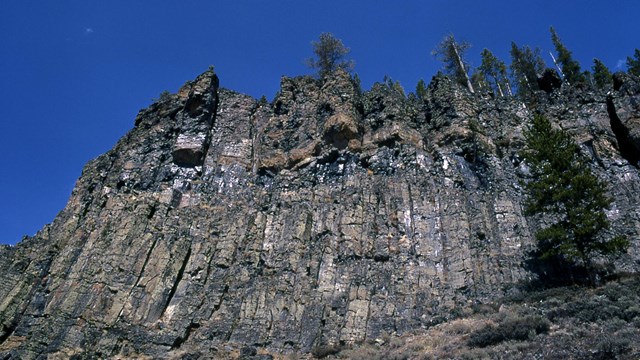
The Earliest Humans in Yellowstone
Human occupation of this area seems to follow environmental changes of the last 15,000 years. 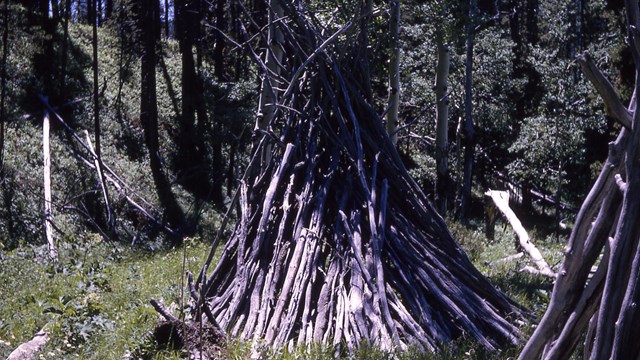
Historic Tribes
Many tribes have a traditional connection to this region and its resources. 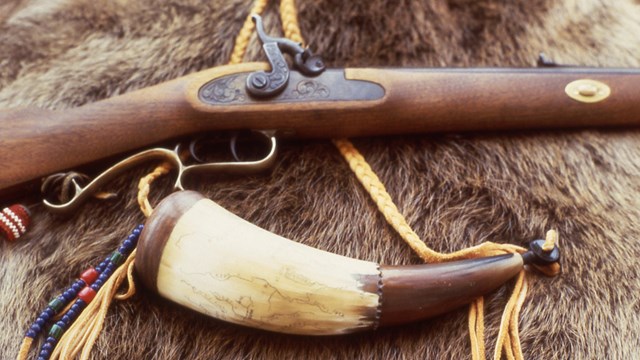
European Americans Arrive
In the late 1700s, fur traders traveled the Yellowstone River in search of Native Americans with whom to trade. 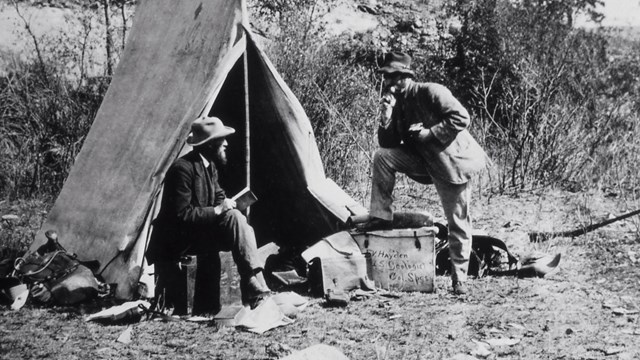
Expeditions Explore Yellowstone
Formal expeditions mapped and explored the area, leading to the nation's understanding of the region. 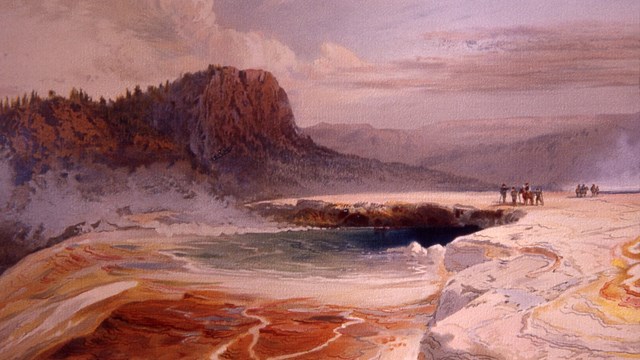
Birth of a National Park
Learn about Yellowstone's early days as a national park. 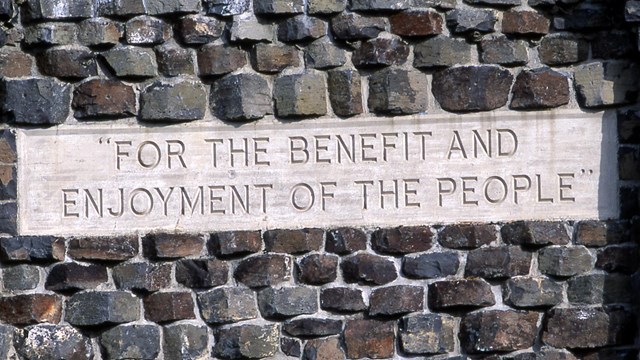
Modern Management
Managing the national park has evolved over time and dealt with some complex issues. 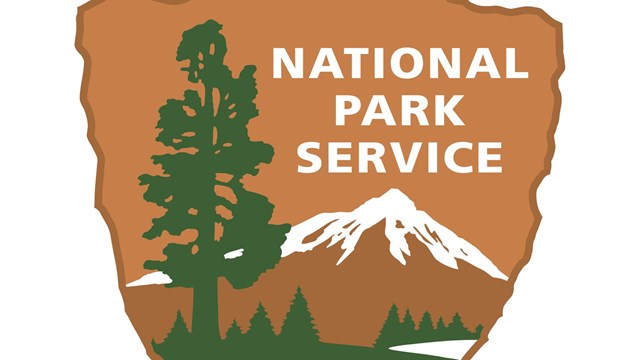
Today's National Park Service
The National Park Service manages over 80 million acres in all 50 states, the Virgin Islands, Puerto Rico, Guam, and American Samoa. 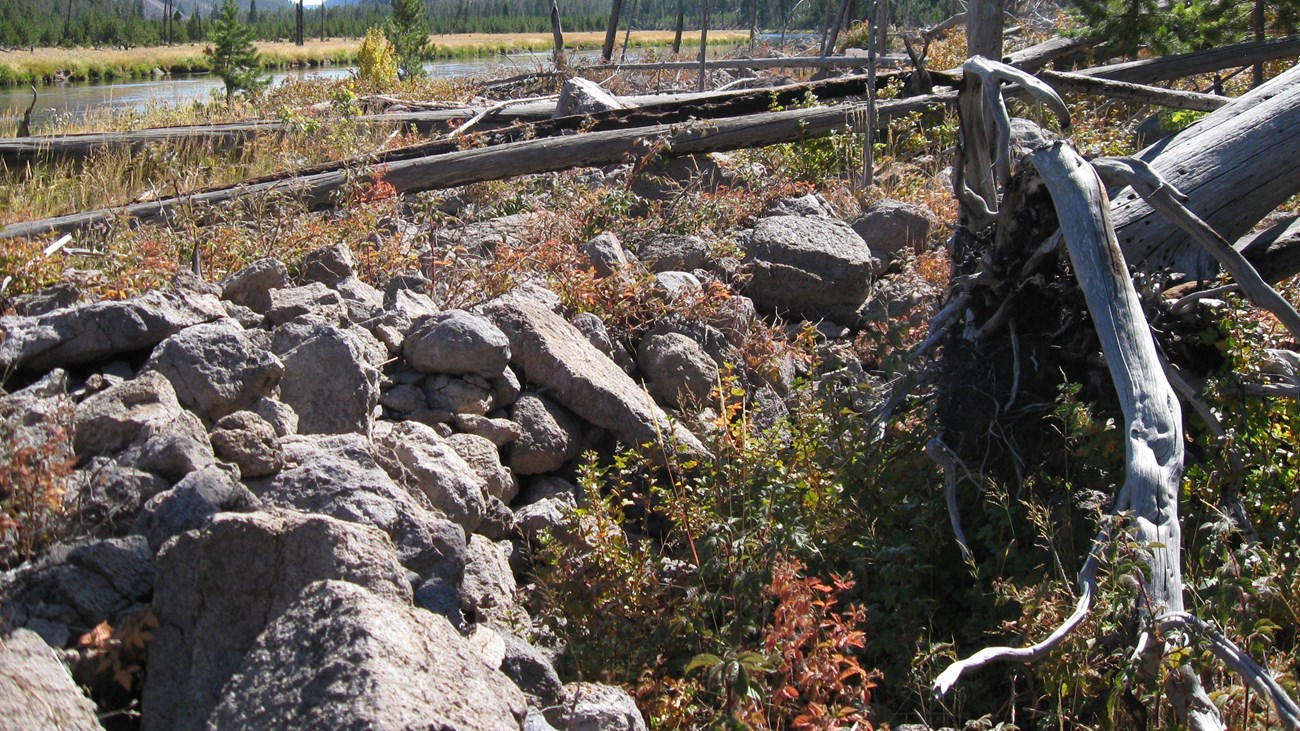
Park History
Learn about Yellowstone's story from the earliest humans to today. |
Last updated: April 18, 2025
